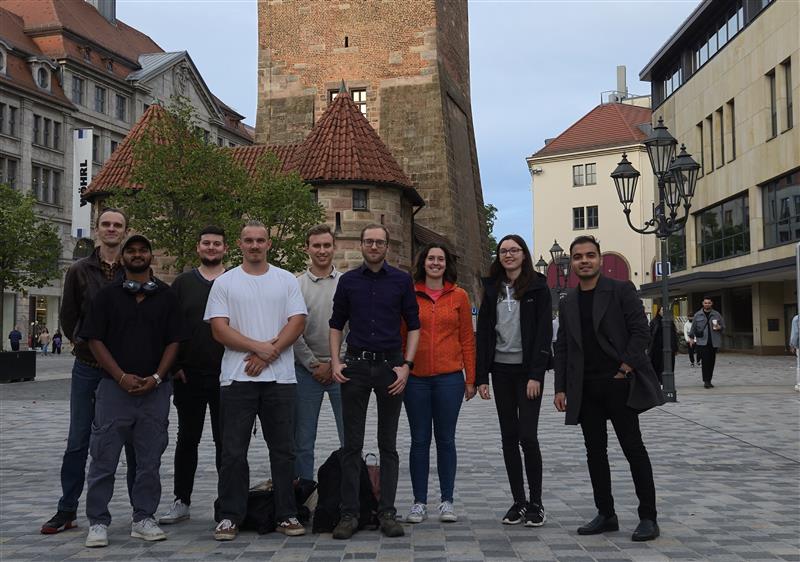Nanomechanics

The Nanomechanics research group investigates the micro- and nano scale mechanical properties of different classes of materials like metals and ceramics. Besides the mechanical strength, the focus is on the fracture toughness, fatigue and time-dependent deformation properties.
Various instruments at the institute make it possible to characterize the different mechanical properties e.g. via nanoindentation and Focused Ion Beam enhanced micropillar compression and in-situ microcantilever bending. Furthermore, the properties of thin films (down to 50 nm thickness) can be accessed by bulge testing.
In May 2022, Benoit Merle was appointed professor to the University of Kassel and is now heading the lab for Mechanical Properties of Materials.
Dr. mont. Michael Wurmshuber
Department of Materials Science and Engineering
Chair of General Materials Properties
- Phone number: +49 9131 85-27473
- Email: michael.wurmshuber@fau.de
Prof. Dr. rer. nat. Mathias Göken
Department of Materials Science and Engineering
Chair of General Materials Properties
- Phone number: +49 9131 85-27501
- Email: mathias.goeken@fau.de
Matthias Glosemeyer, M. Sc.
Department of Materials Science and Engineering
Chair of General Materials Properties
- Phone number: +49 9131 85-27501
- Email: matthias.glosemeyer@fau.de
→ more information
Metallic thin films are used in many applications like sensors and micro electronic mechanical sensors (MEMS) where they are often subjected to cyclic loading. Due to their low thickness in the range of several nanometers to a few micrometers the properties and failure mechanisms of thin films are different comparing to bulk material. The interface character plays an dominant part in how fatigue damage and failure occurs in thin films. The interfaces between thin film and substrate can be considered as hard (thin film on metal or ceramic substrate), soft (thin film on polymer) or free-standing (thin film without substrate).
→ more information
→ more information
→ more information
- , , :
Breakdown of the superplastic deformation behavior of heterogeneous nanomaterials at small length scales
In: Materials Research Letters 9 (2021), p. 41-49
ISSN: 2166-3831
DOI: 10.1080/21663831.2020.1818323
URL: https://www.tandfonline.com/doi/pdf/10.1080/21663831.2020.1818323 - , , , , , , , , , :
Effective usage of 2D MXene nanosheets as solid lubricant – Influence of contact pressure and relative humidity
In: Applied Surface Science 531 (2020), p. 1-10
ISSN: 0169-4332
DOI: 10.1016/j.apsusc.2020.147311
URL: https://www.sciencedirect.com/science/article/pii/S0169433220320687?dgcid=coauthor - , , , , , , :
Effect of cold sintering process (CSP) on the electro-chemo-mechanical properties of Gd-doped ceria (GDC)
In: Journal of the European Ceramic Society 40 (2020), p. 5612-5618
ISSN: 0955-2219
DOI: 10.1016/j.jeurceramsoc.2020.06.010 - , , :
Extending the range of constant strain rate nanoindentation testing
In: Journal of Materials Research (2020)
ISSN: 0884-2914
DOI: 10.1557/jmr.2019.408
URL: https://link.springer.com/content/pdf/10.1557/jmr.2019.408.pdf - , , , :
Revealing the local fatigue behavior of bimodal copper laminates by micropillar fatigue tests
In: Materials Science and Engineering A-Structural Materials Properties Microstructure and Processing 788 (2020), Article No.: 139502
ISSN: 0921-5093
DOI: 10.1016/j.msea.2020.139502


